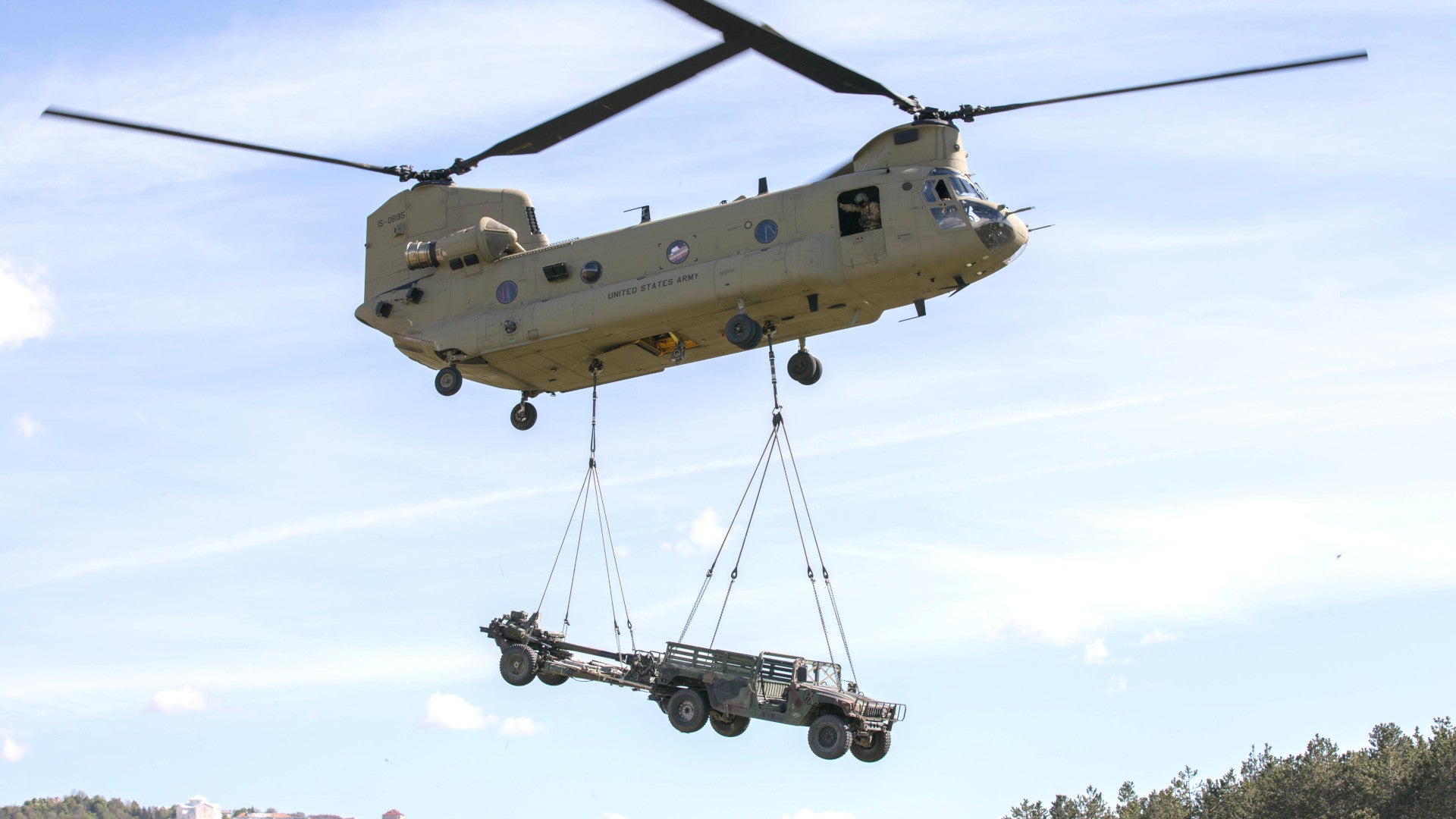Boeing says that it will begin flight tests of a CH-47 Chinook equipped with more powerful General Electric T408 engines, the same ones that the U.S. Marine Corps’ future Sikorsky CH-53K King Stallions will use. The announcement comes amid a series of new delays in the troubled King Stallion program and a Congressionally mandated review of whether an alternative helicopter, such as the Chinook, might be able to meet Marine requirements instead.
The Chicago-headquartered aircraft company provided the update on the integration of the T408 onto the CH-47 during a media tour last week ahead of the Paris Air Show. Boeing has been working on the project together with General Electric (GE) since 2016 as part of a Cooperative Research and Development Agreement (CRADA) with the U.S. Army. It is important to note that this engine effort is separate from that service’s larger CH-47F Block II upgrade program and there are no formal plans, as yet, to actually re-engine those helicopters in the future.
“We’re pretty far along in the modifications of the aircraft,” Chuck Dabundo, Boeing’s H-47 program manager, said during the media tour, according to Rotor and Wing International magazine. “We’re getting it ready to fly.”
Boeing has not disclosed any estimates about how much additional lifting capacity or other added performance a CH-47F with two T408s will have compared the existing variant. The GE engines do each produce 7,500 shaft horsepower (SHP), around 2,500 more SHP than the present T55s.
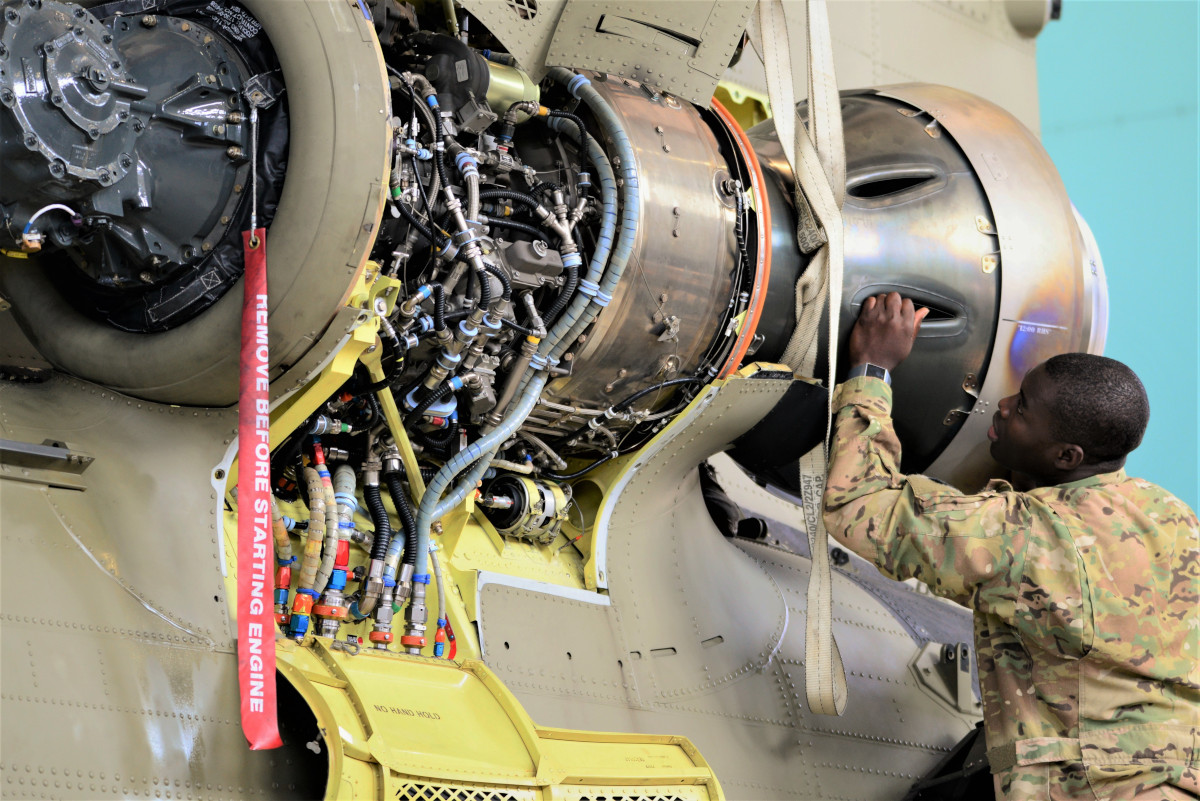
GE also heavily promotes the engines as fuel efficient and easier to maintain than older designs, which might mean a re-engined Chinook might have greater range and be cheaper to operate. The engine maker specifically says that the T408 offers an 18 percent improvement in fuel consumption and features fewer moving parts than its older T64, the latest iterations of which is in a similar SHP class to the T55. It remains to be seen if these benefits over the T64 translate to similar benefits over the T55.
It’s also unclear whether the CH-47 demonstrator with the new engines will include any of the Block II upgrades, such as the updated drivetrain, new rotor blades, revised fuel-tank configuration, and reinforced fuselage. Boeing has previously said that these updates will allow the updated CH-47Fs to lift more and give them improved performance overall. The Chinook is already well known for its hot-and-high performance and these upgrades, plus a new engine, could give it even more capability in that regard.
What is clear is that the T408s are an essential component of Sikorsky’s CH-53K, which has three of them. The engines give the King Stallion nearly 60 percent more power over the older CH-53E Super Stallion, according to GE. The CH-53K has demonstrated an ability to carry up to 36,000 pounds of cargo, but the Marines expect it to more commonly carry less. One key goal is the ability to carry an external load of 27,000 pounds over a 110-mile combat radius in hot and high conditions.

Boeing says that the latest iterations of the CH-47F can only carry around 21,000 pounds. If the new engines can push that figure at all closer to King Stallion’s 27,000-pound lifting capacity, it could put the Chinook in a new position when competing with Sikorsky’s offering.
This is particularly important because the CH-53K program has suffered from various technical problems, which have produced a string of significant delays stretching all the way back to the program’s beginnings in 2006.
Significant problems continue to persist, which you can read about in more detail here. Just between May 2018 and January 2019, the Marine Corps’ projected date for reaching Initial Operational Capability (IOC) with the King Stallion has slipped from December 2019 to October 2021.
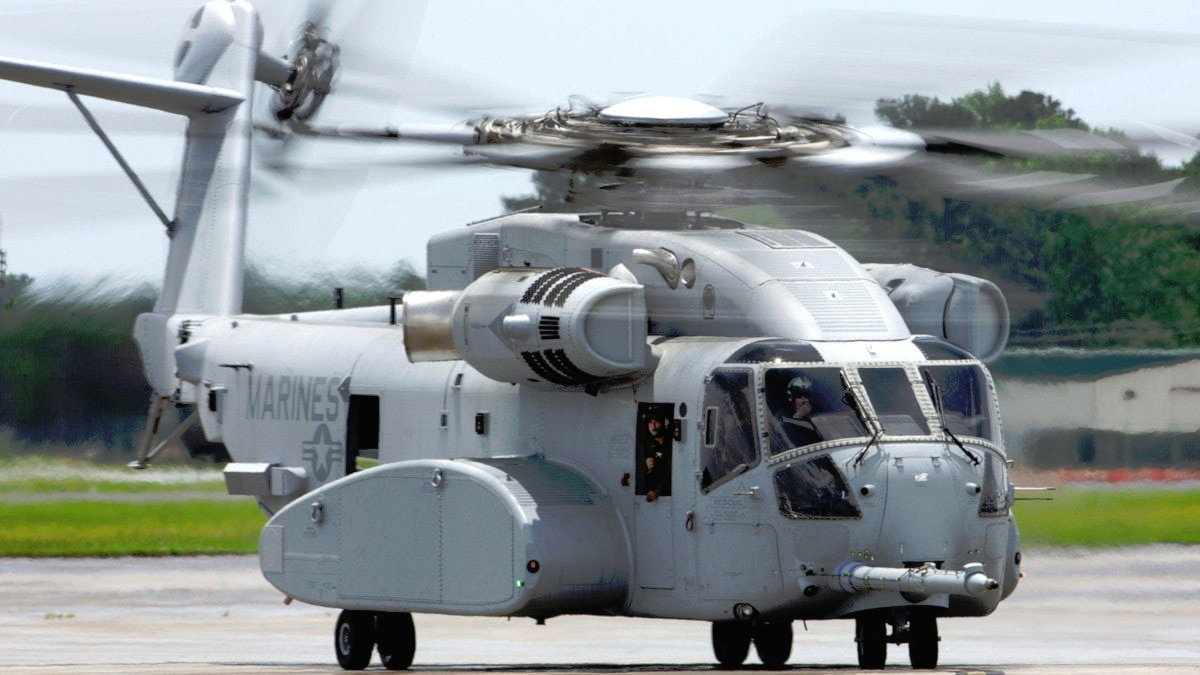
These issues have prompted members of Congress to order the Pentagon’s Office of Cost Assessment and Program Evaluation (CAPE) to review the CH-53K program and assess whether or not there are any alternative options available. Some legislators have publicly asked the Marines whether a variant of the CH-47 would be a viable substitute.
“As we step back and we look at this program, as a heavylift helicopter, it’s the only one that this nation has that can do what it can do,” U.S. Marine Corps Lieutenant General Steven Rudder, the service’s Deputy Commandant for Aviation, told lawmakers during a hearing in April 2019. “There is no other helicopter in the world that has lifted 36,00 pounds … 100 miles ship-to-shore with 27,000 pounds … and go back and forth all day long.”

CAPE has shared this opinion, assessing early on its review that if the Marines ditched the CH-53K for a variant of the CH-47, they would have to make operational adjustments to accommodate the lost lift capacity. But if a T408-engined Chinook has capabilities closer to that of the King Stallion, it could significantly alter those assessments.
Of course, there are additional factors that would also come into play. While U.S. and foreign CH-47 variants regularly conduct shorter-duration shipboard missions from Navy amphibious ships, a Marine Chinook would need specific features to support protracted operations at sea, including measures to mitigate saltwater corrosion. The CH-47 also may not be compatible with the very firm physical space constraints aboard those vessels.
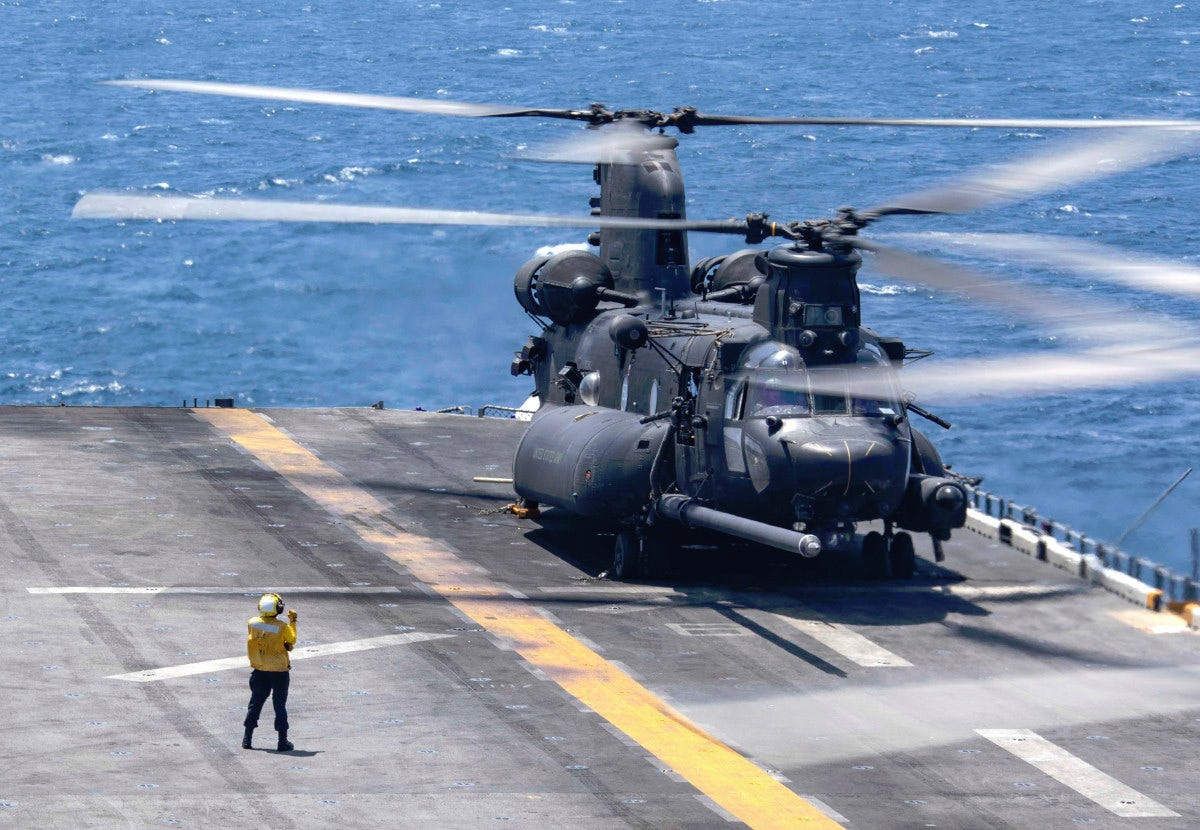
It’s not clear whether CAPE has finished its review and delivered it to Congress, but, so far, the King Stallion program seems to be moving ahead unchecked. The Navy, which is managing the CH-53K program for the Marines, awarded Sikorsky, which is now a subsidiary of Lockheed Martin, a $1.3 billion contract for 12 of the helicopters on May 17, 2019. The Marines still expect to eventually take delivery of 200 King Stallions in the coming years.
But if the Marine Corps’ plans for the CH-53K remain unchanged, Chinooks with T408 engines could present a new challenge to future King Stallion sales. Germany and Israel are looking to replace their CH-53Gs and CH-53 Yasurs respectively. The CH-47F and CH-53K are already the primary contenders in both cases.
If a CH-47F with two T408s is not drastically more expensive than the existing T55-equipped version, it could make the Chinook even more appealing. The Army has been buying new production F models for between $30 and $40 million each in recent years, depending on the total size of the purchase order, while the average unit cost for the CH-53K has ballooned to more than $120 million. Operational costs may also be lower, with two engines to maintain and feed fuel to rather than the King Stallions three. Also, with two engines instead of three, there should be less gearing and transmission complexity to deal with over the life of aircraft.
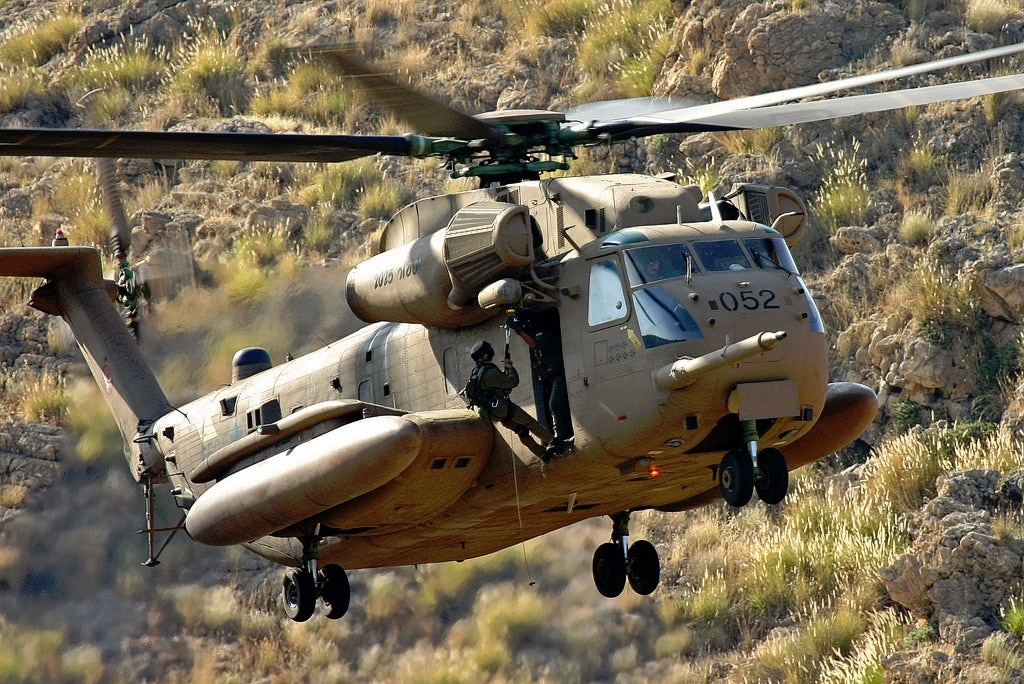
The T408 engine upgrade could also be attractive to existing CH-47 customers as a potentially low-cost way of increasing the capabilities of these helicopters. The Army’s Block II upgrade effort has already paid for the development of the fuselage modifications necessary to accommodate larger, heavier engines and the service’s CRADA effort will now demonstrate the viability of the helicopter actually fitted with the new engines.
“The engine kind of fell out [of the Block II upgrade program],” Randy Rotte, Director of Business Development for Cargo Helicopters and Future Vertical Lift at Boeing, recently told FlightGlobal. “However, everyone realizes that at some point that becomes the limiting factor on the aircraft to do more and that would be the next point to touch.”
International Chinook sales could be increasingly important for Boeing, in general, given that its chief customer, the U.S. Army, is presently looking to scale back its CH-47 purchases and the Block II upgrade program. The service says it needs to do this ostensibly to free up funds for other higher priority modernization efforts, including various future rotorcraft as part of the Future Vertical Lift (FVL) program. But there are no plans to curtail purchases of special operations MH-47Gs for the Army’s 160th Special Operations Aviation Regiment and those helicopters could certainly benefit from the T408 upgrade, as well.
Regardless, the Army looks set to find itself in a battle with Congress over this issue. The House Appropriations Committee has just recently recommended restoring all of the Block II upgrade funding that the service had cut out of its budget request for the upcoming 2020 Fiscal Year.
All told, the futures of both the Army’s CH-47 program and the Marine’s CH-53K program seem to be in an increasingly uncertain state. At the same time, Boeing’s effort to integrate the T408 engine into the CH-47F is a logical next step for that helicopter and one that could make it very attractive to any future customers.
Contact the author: joe@thedrive.com
